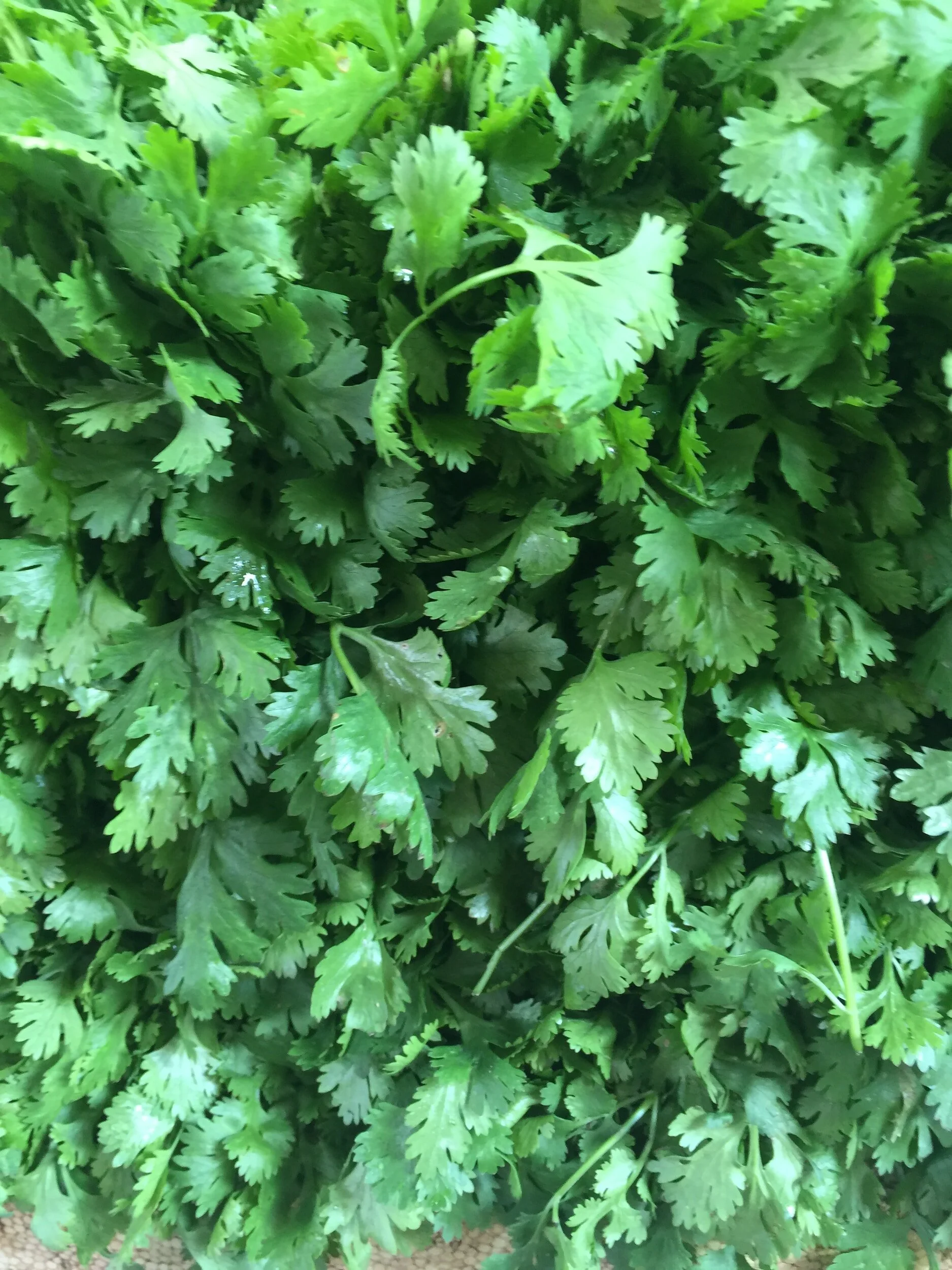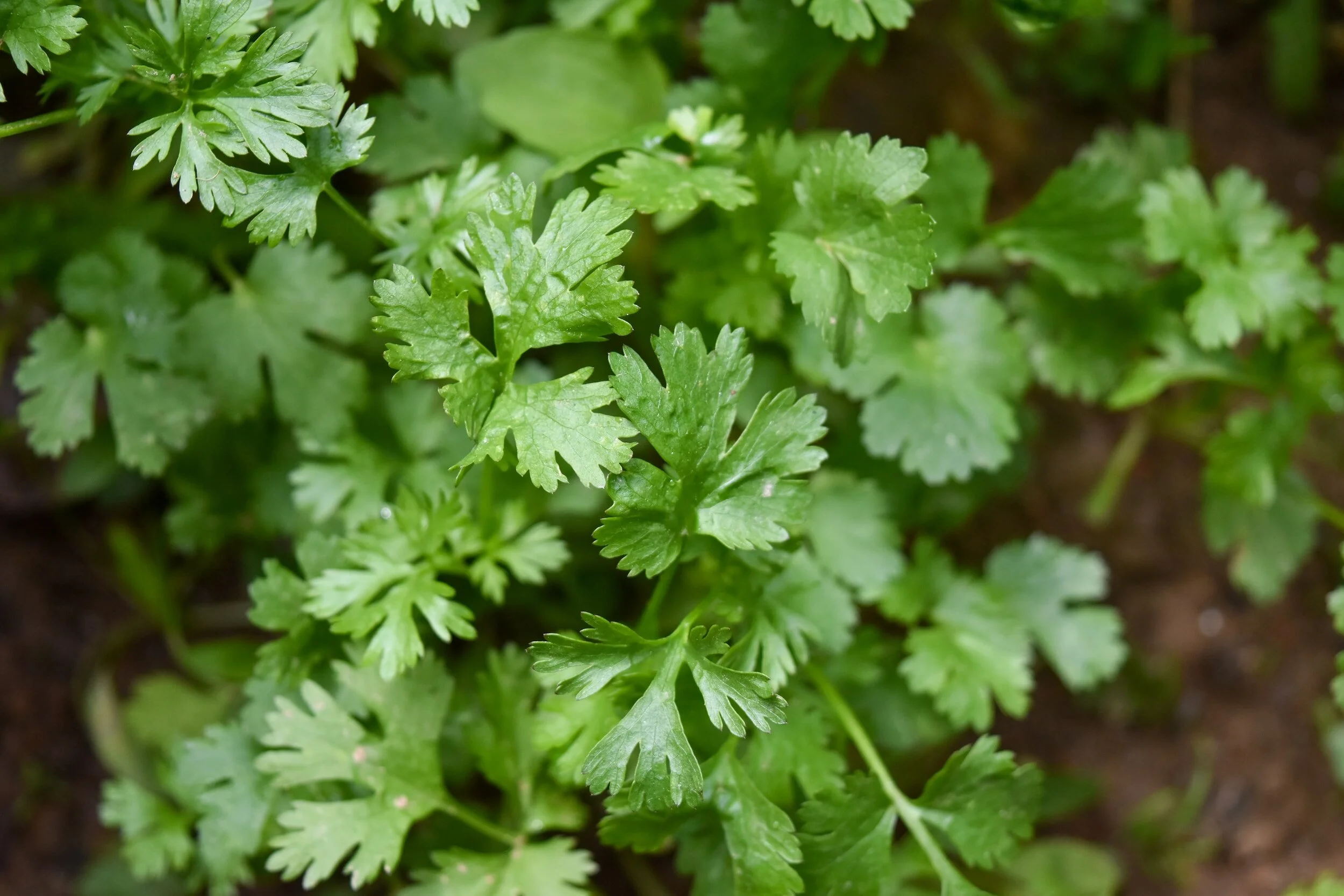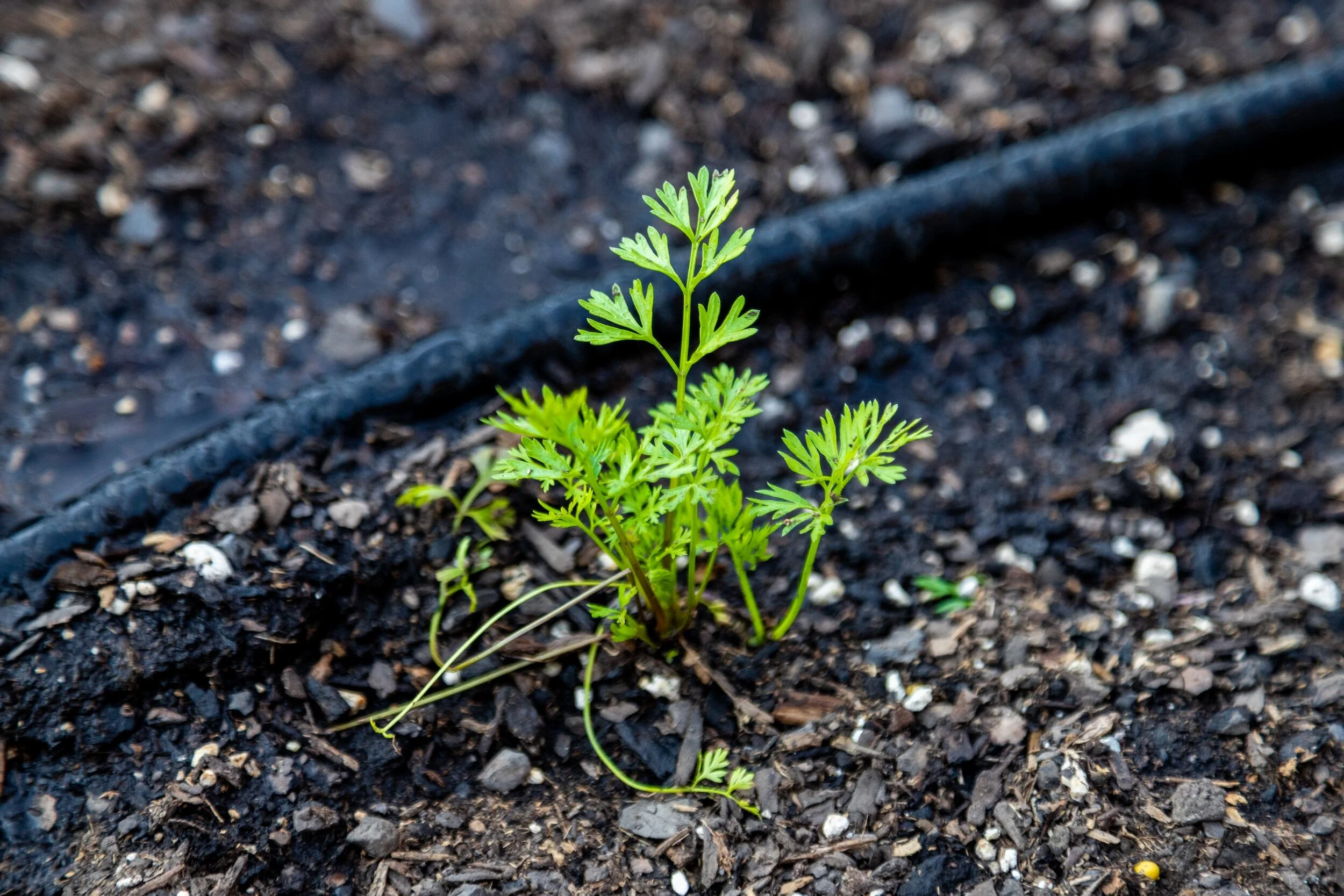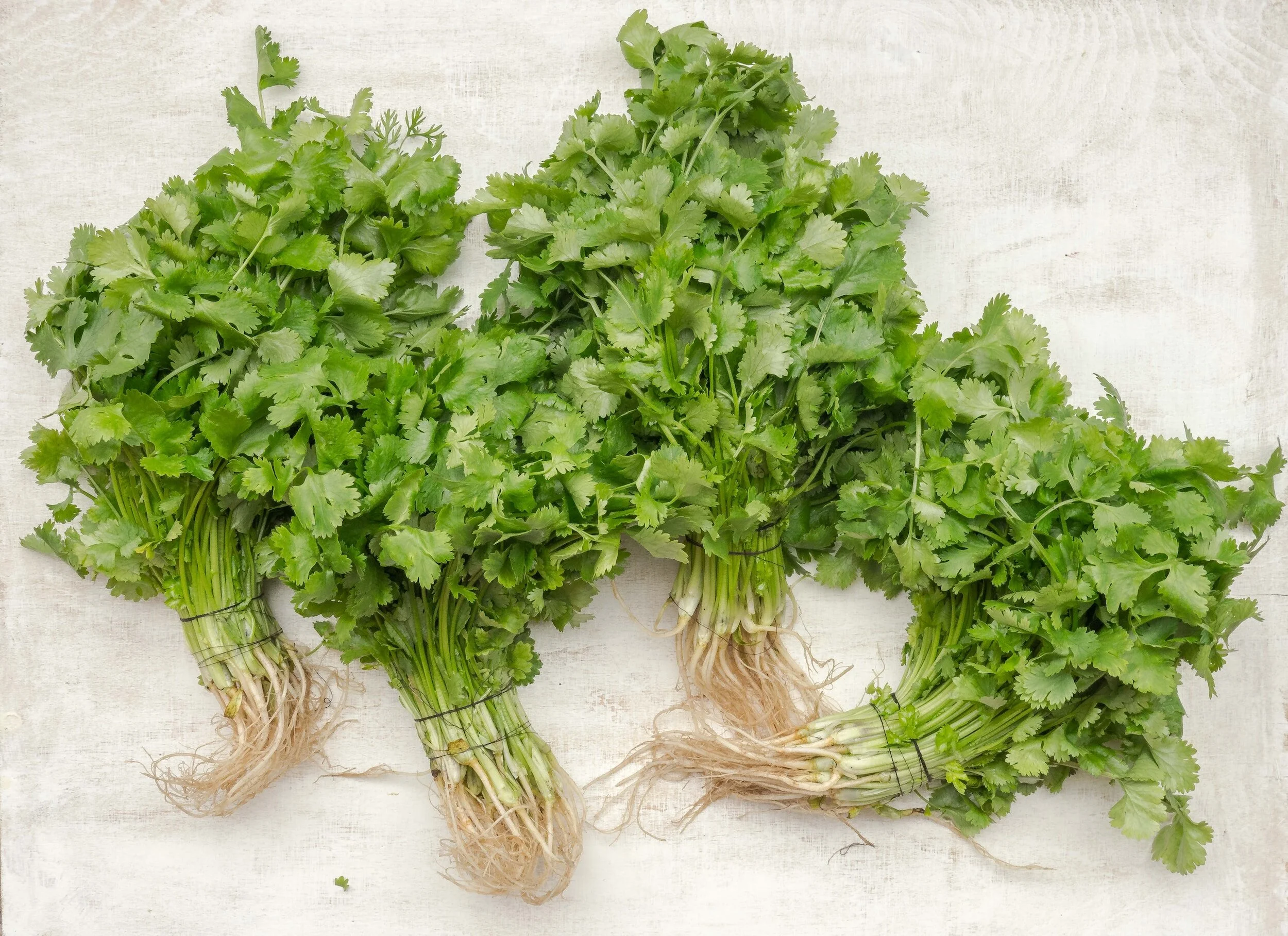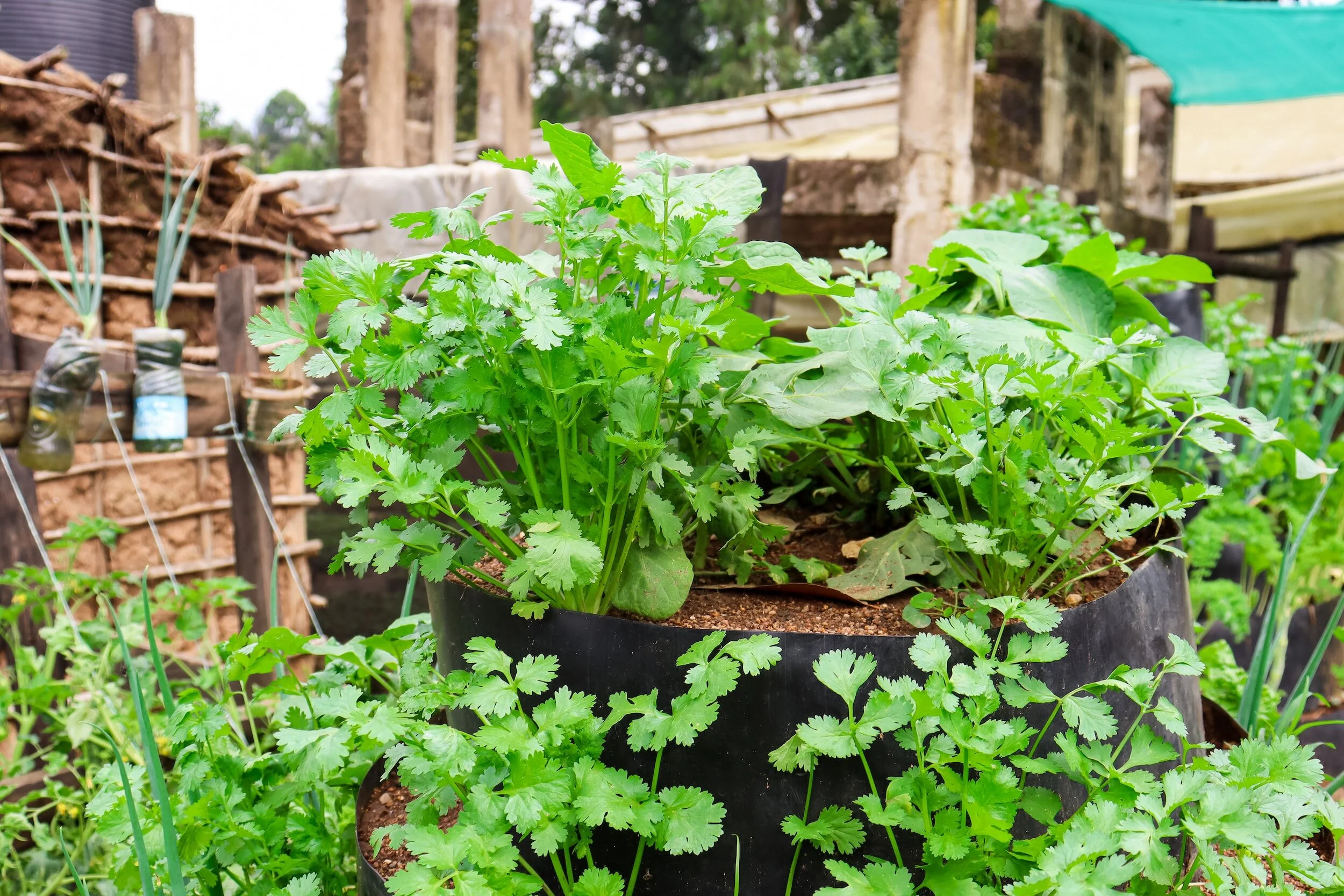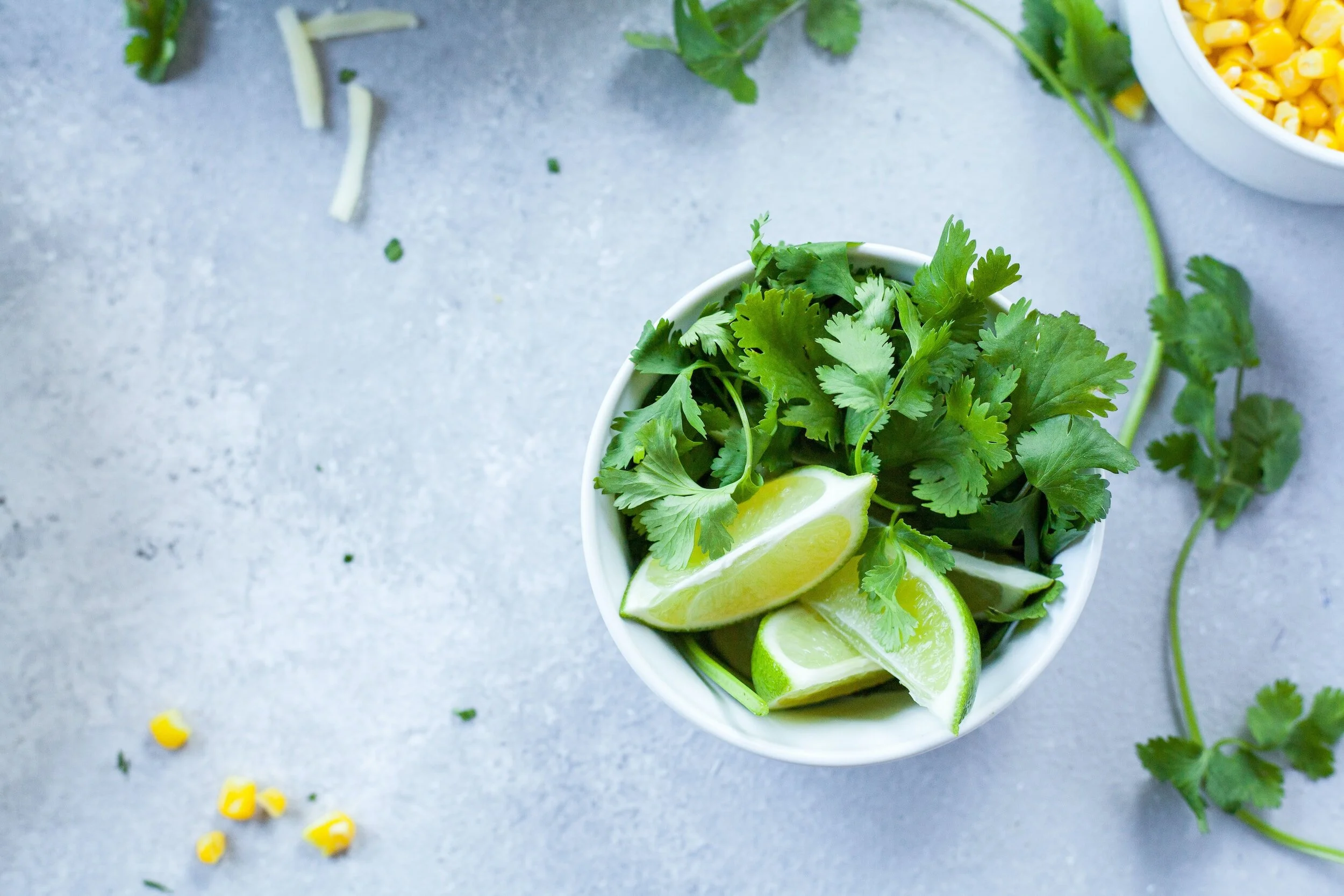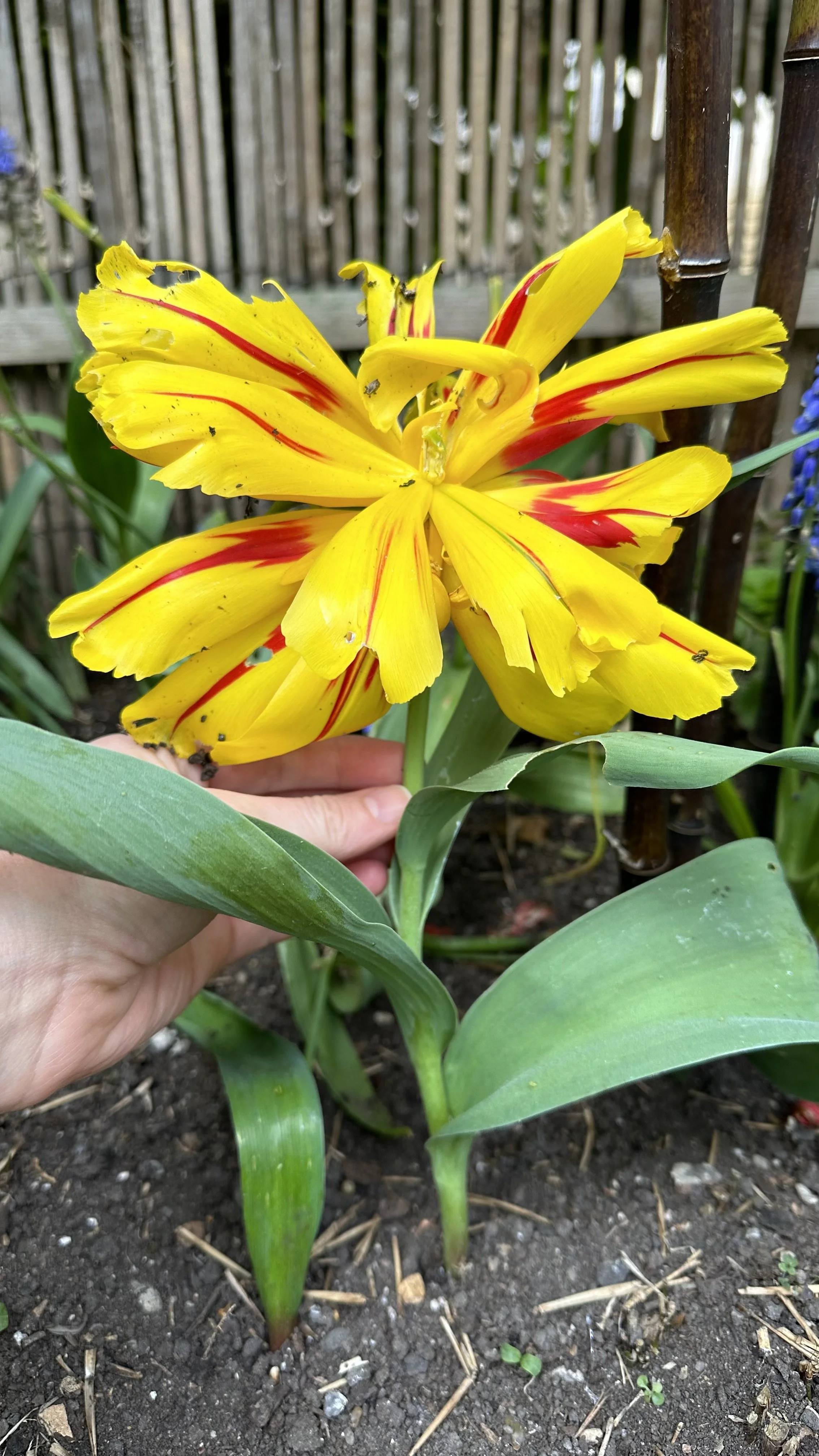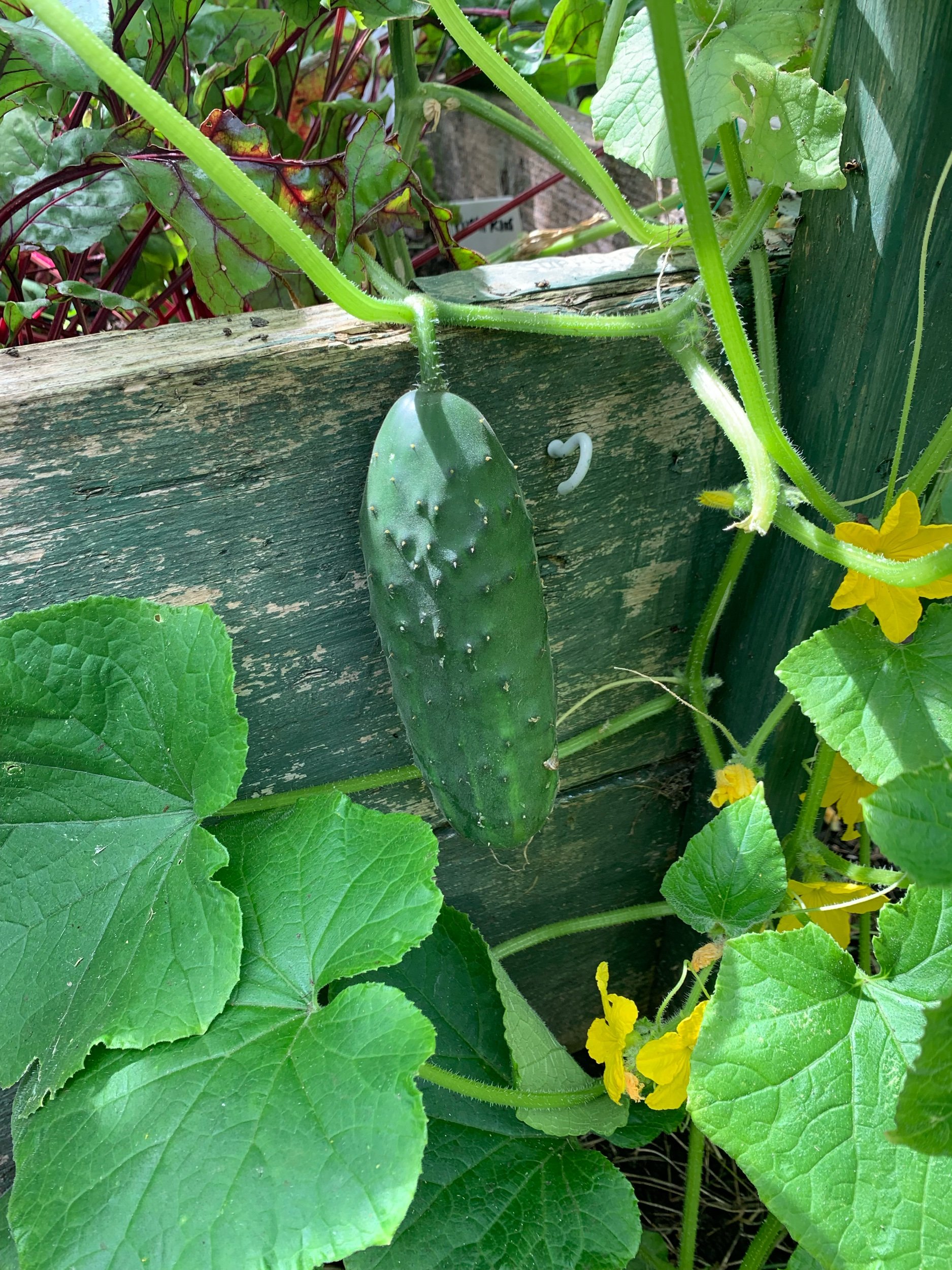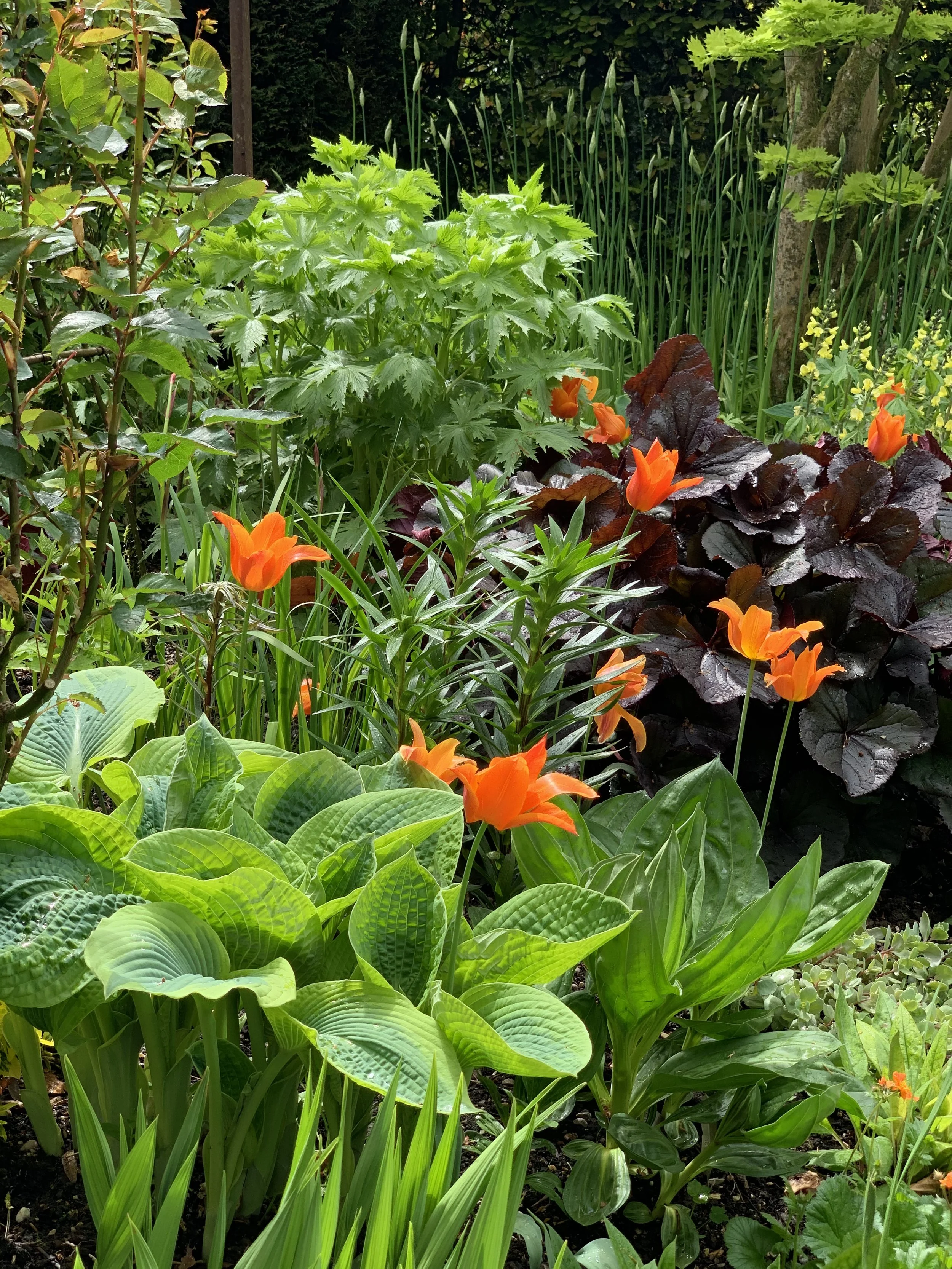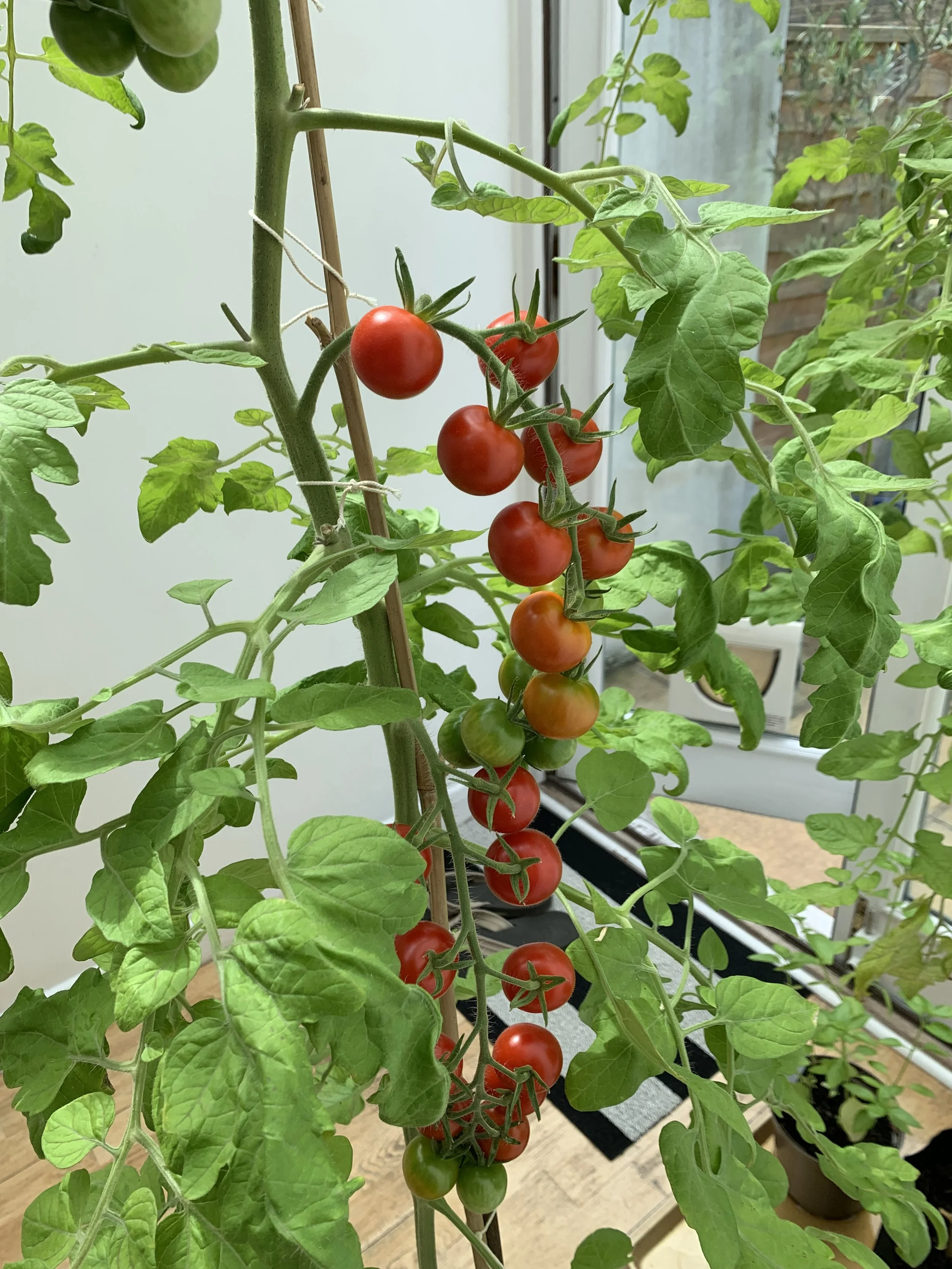How to Grow Cilantro
This article has links to products that I may make commission from.
In this guide on how to grow cilantro, we’ll delve into all all aspects of growing cilantro, from storing coriander seeds and planting in full sun, to understanding cilantro's growth and caring needs during the growing season
Whether you're a gardener wanting to expand your herb garden or a beginner with a desire to cultivate your own flavors, this guide is for you.
You'll also find helpful tips for growing cilantro indoors, in pots, and even from cuttings. As we journey through this growing guide together, you'll learn how easy and rewarding it is to have fresh, home-grown cilantro at your fingertips, ready to add that special zing to your culinary creations.
To learn more about growing cilantro, check out my guide: The Easiest Ways to Keep Cilantro from Bolting.
In this article:
Getting Started: Understanding Cilantro Plants
To successfully grow cilantro, it's essential to understand the unique characteristics and requirements of this herb. Cilantro, or Coriandrum sativum, is a quick-growing annual plant native to the Mediterranean and Middle Eastern regions.
It's widely used in a variety of cuisines for its distinctive, aromatic leaves. Cilantro's seeds are known as coriander, which have a completely different flavor profile and are also widely used in cooking.
One crucial thing to know about cilantro plants is that they prefer cool weather.
These plants thrive in full sun and well-drained soil, with temperatures between 50 and 85 degrees Fahrenheit being the most ideal. Extreme heat tends to make cilantro bolt, meaning the plant quickly moves from the vegetative stage to the flowering stage, ceasing the production of usable leaves.
So, if you live in a hot climate, consider planting your cilantro in a spot that receives shade during the hottest part of the day.
Another key factor for healthy cilantro growth is regular watering. Cilantro likes evenly moist soil. However, overwatering or poorly drained soil can lead to root rot, which is detrimental to the plant.
So, make sure the soil is well-draining, and try to keep it consistently moist but not waterlogged. Spacing is also vital for cilantro plants. Generally, cilantro should be spaced about 6 to 8 inches apart.
This allows the plants plenty of room to grow and ensures good air circulation, which can help prevent disease. If you're planning to grow cilantro in a pot, choose a container that's at least 18 inches wide so the roots have plenty of room to expand.
Here are the pots I recommend for growing cilantro:
To learn more about herb gardening, check out my guides:
How to Store Coriander Seeds
Proper storage of coriander seeds can extend their viability, ensuring successful germination when you're ready to plant.
First, it's important to know that coriander seeds are the dried fruit of the cilantro plant.
When the plant bolts, or goes to seed, it produces clusters of round, tan-colored seeds. These can be harvested, dried, and stored for future planting or used as a spice in cooking.
Here are the key steps to properly store coriander seeds:
Harvesting the Seeds
Once the cilantro plant has flowered and the seed heads have turned brown, it's time to harvest.
Cut the entire seed head off the plant and place it in a paper bag. Shake the bag to dislodge the seeds from the plant material.
Drying the Seeds
Leave the harvested seeds in the bag in a warm, dry location for about one to two weeks to make sure they're thoroughly dry.
Storing the Seeds
After they're dry, transfer the seeds to an airtight container. This could be a glass jar with a tight-fitting lid, a sealed plastic bag, or a vacuum-sealed pouch.
Label the container with the date of harvest.
Here are the storage jars I recommend for seeds:
Choosing the Right Location
Store the container in a cool, dark place. A pantry or a cabinet that's away from heat sources and direct sunlight is ideal.
These conditions help preserve the seed's viability and prevent premature germination.
Checking the Seeds
Every few months, check your stored coriander seeds. Look for any signs of moisture or mold.
If you see any, remove the affected seeds immediately to prevent the problem from spreading.
By correctly storing your coriander seeds, you can maintain their freshness and improve your chances of successful cilantro growth in the future. Remember that seeds naturally lose viability over time, so for the best results, try to use your stored coriander seeds within two to three years.
Planting Cilantro: From Seeds to Fresh Leaves
The best time to plant cilantro seeds, or coriander seeds as they're also known, is in the late spring, following the last frost of the growing season.
You can also grow cilantro from seed in pots filled with high-quality potting mix.
Growing your own cilantro provides a rewarding experience and a continuous supply of fresh leaves for your culinary needs.
Here is a step-by-step guide on how to plant cilantro from seeds to fresh leaves:
Prepare the Soil
Start by using a spade and preparing your garden bed or pot with well-draining soil. If your soil is heavy or clay-based, consider amending it with compost or organic matter to improve its texture and drainage. For pots, a high-quality potting mix is ideal.
Here is the potting mix I recommend using:
Plant the Seeds
Plant the coriander seeds about 1/4 inch deep and 6 to 8 inches apart. This spacing gives each plant enough room to grow and ensures good air circulation.
If you're planting in a pot, make sure the container is wide enough to accommodate the root spread of the cilantro plant.
Here are the cilantro seeds I recommend planting:
Watering
After planting the seeds, water them well. For this, you can use rainwater collected from a water butt. Keep the soil consistently moist but not waterlogged.
Regular watering is crucial, especially in the early stages of growth, but be cautious not to overwater as this can cause the seeds to rot.
Germination
Cilantro seeds usually take 7-10 days to germinate, but don't be concerned if it takes a little longer. Be patient and keep the soil evenly moist.
Sunlight
Place your cilantro in a location where it can receive full sun like a south facing or west facing place in the garden.
However, if you live in a particularly hot area, partial shade will help prevent the plant from bolting too quickly.
Care and Maintenance
As your cilantro plants grow, continue to water regularly and monitor for any signs of pests or disease.
Harvesting
You can begin to harvest the cilantro leaves once the plants are about 6 inches tall. Cut the leaves from the outside of the plant to encourage new growth.
Regular harvesting helps promote a bushier plant and a more extended harvesting period.
Remember that cilantro is a fast-growing plant. It can go from seed to harvest in about 4-6 weeks during the peak growing season. This means you may want to consider succession planting every 2-3 weeks to ensure a continuous supply of fresh cilantro leaves throughout the season.
Growing cilantro from seeds to fresh leaves can be a fun and rewarding gardening project. With the right care, you'll have a healthy cilantro plant ready to add fresh flavor to your dishes.
Growing Cilantro from Cuttings
Can you grow cilantro from cuttings? Absolutely!
While cilantro is typically grown from seed, you can also propagate it from cuttings, although it's not the most common or successful method. It's a slightly more complex process but can be a rewarding challenge.
Here's how to do it:
Selecting the Cutting
Choose a healthy cilantro plant and cut a 4-6 inch stem section from the top of the plant. Make sure the stem has a few leaf nodes, which are small bumps where leaves connect to the stem.
Preparing the Cutting
Remove the leaves from the bottom 2 inches of the cutting. This portion will be submerged in water, and any leaves under the waterline can rot and harm the cutting's health.
Rooting in Water
Place the stem cuttings in a jar or glass of water, ensuring that the bottom nodes are submerged. Put the container in a bright, warm location but out of direct sunlight to prevent overheating or drying out.
Waiting for Roots
Change the water every two days to keep it fresh and oxygenated. After a few weeks, you should start to see roots forming from the submerged nodes.
Planting the Cutting
Once roots are about 1-2 inches long, plant the cutting in a pot or in your garden. Be sure to use well-draining soil and a location with full sun or partial shade.
Care and Maintenance
Water regularly, especially during the initial period after planting the cutting. Cilantro cuttings are slightly more delicate than seed-grown plants, so be careful not to overwater or expose them to extreme temperatures.
Remember, growing cilantro from cuttings is a bit trickier than from seeds, and it might not always be successful. However, if you're up for a gardening experiment, it's a fun way to try your hand at propagating this flavorful herb.
Cilantro Plant Care: Maintaining Your Cilantro Plants
Keeping your cilantro plant healthy and productive involves a combination of right light, water, soil conditions, and regular harvesting.
Here are some key points to consider for maintaining your cilantro plants:
Sunlight
Cilantro prefers full sun, ideally around 6 hours a day. However, if you're in a particularly hot climate, cilantro will appreciate some shade during the peak afternoon heat to prevent it from bolting prematurely.
Watering
Keep the soil consistently moist but not waterlogged. Cilantro does not do well in dry soil, so regular watering is crucial, especially during dry spells. However, be sure not to overwater, as this can lead to root rot.
Soil
Cilantro does best in well-draining, fertile soil.
If your garden soil is heavy clay or sandy, consider amending it with organic compost to improve its texture and nutrient content.
For pots, a good-quality potting mix is ideal.
Temperature
Cilantro is a cool-season crop. It prefers temperatures between 50 and 85 degrees Fahrenheit. When temperatures climb, cilantro tends to bolt, or go to seed, which marks the end of its life cycle.
You can delay bolting by providing shade during the hottest part of the day or by planting in cooler seasons.
Harvesting
Regular harvesting encourages more growth and helps keep the plant productive. When the plant is about 6 inches tall, you can start harvesting. Cut off the outer leaves close to the stem and always leave a few leaves in the center to allow the plant to keep growing.
Bolting
If your cilantro bolts, or goes to seed, don't be disappointed. You can let the plant flower and produce seeds, which you can then harvest as coriander or save for next year's planting.
Pests and Diseases
Cilantro plants are generally pest-resistant. However, be on the lookout for common garden pests such as aphids or whiteflies. Diseases to watch out for include fungal leaf spot and bacterial leaf spot. If you notice any signs of these, use an organic pest control method to keep them at bay.
Maintaining your cilantro plants can be quite straightforward once you understand their needs. With proper care and attention, your cilantro plants can thrive, providing you with fresh leaves for your culinary creations.
Harvesting Your Cilantro
The question of "how to harvest cilantro" is a common one. You can begin to harvest your cilantro leaves once the plants are established and have ample foliage. Simply cut the top of the plant to promote new growth and enjoy your fresh leaves.
Here are the steps to harvest your cilantro:
When to Harvest
Begin harvesting cilantro once the plants are about 6 inches tall, which usually happens about 3-4 weeks after planting. At this stage, the plant is mature enough to handle harvesting without hindering its growth.
How to Harvest
To harvest, simply cut off the outer leaves close to the stem using a sharp pair of gardening scissors or a knife. Always leave a few leaves in the center of the plant to promote further growth.
Regular Harvesting
Regular harvesting encourages bushier growth and can extend the life of your cilantro plant. If you're growing cilantro for the leaves, it's best to harvest regularly and keep the plant from flowering, as the leaves become scarce once the plant bolts.
Harvesting Seeds (Coriander)
If you'd like to harvest coriander seeds, allow the plant to flower and go to seed. Wait until the seed heads turn brown, then cut the whole seed head and place it in a paper bag. After a week or two of drying, shake the bag to dislodge the coriander seeds from the dried seed heads.
Remember, cilantro leaves offer the best flavor when they're fresh, so harvest just before you plan to use them in your cooking. If you have an overabundance of cilantro, consider sharing with neighbors or freezing the leaves for later use.
With proper harvesting techniques, you can enjoy the freshest cilantro leaves throughout the growing season and even harvest coriander seeds to use as a spice or for next year's planting.
Dealing With Cilantro Bolting
Cilantro bolting refers to the plant's natural transition from the vegetative (leaf production) phase to the reproductive (flowering and seed production) phase. While this is a normal part of the cilantro life cycle, it can be frustrating for gardeners who want to harvest the fresh leaves.
When cilantro bolts, the plant puts its energy into flowering and seed production, leading to fewer and less flavorful leaves.
Here's what you can do to manage cilantro bolting:
Understand the Cause: Cilantro usually bolts when temperatures rise, typically in late spring or early summer. Stress from heat or dry conditions can cause the plant to bolt prematurely.
Plant in the Right Season: To avoid premature bolting, try planting cilantro in cooler seasons, such as early spring or fall. In regions with mild winters, cilantro can even be grown over the winter.
Provide Shade: If you live in a hot climate, plant cilantro in a location that receives some afternoon shade. This can help cool the plants and slow down the bolting process.
Regular Harvesting: Frequent harvesting can also delay bolting. The more leaves you cut, the more the plant is stimulated to produce new leaves instead of flowering.
Succession Planting: Plant new cilantro seeds every 2-3 weeks during the growing season. This will provide you with a continuous supply of fresh cilantro leaves, even if some of the plants bolt.
Choose Slow-Bolt Varieties: Consider planting varieties of cilantro that are bred to resist bolting, often called "slow-bolt" varieties. These types have been selected for their ability to withstand warmer temperatures without bolting.
Try this organic slow bolt variety:
Despite your best efforts, cilantro will eventually bolt. When it does, consider it an opportunity to harvest and store coriander seeds. These can be used in cooking, or you can save them to plant during the next growing season.
Bolting isn't the end of your cilantro plant's usefulness; it's just a transition to a different phase.
From Harvest to Table: Using Fresh Cilantro
Fresh cilantro is a versatile herb that adds a unique flavor to a variety of dishes. From salsas to curries, this herb is an essential ingredient in many cuisines worldwide.
Here are a few ways you can use your freshly harvested cilantro:
Salsas and Sauces: Cilantro leaves are a fundamental ingredient in salsas, chutneys, and sauces. Its fresh and citrusy flavor complements the tanginess of tomatoes and lime in a classic salsa, while its unique aroma brings depth to a variety of sauces.
Soups and Stews: A sprinkle of chopped cilantro can enhance the flavor of soups and stews. Add it towards the end of cooking to retain its fresh flavor and vibrant color.
Salads: Cilantro pairs well with various salad ingredients. Use it to add a burst of flavor to salads, or make a cilantro-lime dressing for a refreshing and tangy touch.
Marinades: Cilantro, combined with ingredients like lime, garlic, and olive oil, makes a flavorful marinade for meats, fish, and vegetables.
Asian and Mexican Cuisine: Cilantro is a staple in many Asian and Mexican dishes. Whether it's used in pho, curry, tacos, or guacamole, cilantro adds a distinctive taste that's hard to replicate.
Remember, cilantro leaves have the best flavor when they're fresh. Harvest just before you plan to use them in your cooking. For preserving cilantro, you can freeze the leaves in ice cube trays with water or olive oil.
Drying is not recommended, as cilantro tends to lose a lot of its characteristic flavor when dried. The transition from harvest to table can be a joyous journey, especially when you've grown the herbs yourself.
With its unique flavor profile, fresh cilantro can turn ordinary meals into extraordinary culinary delights.
FAQs
Is cilantro easy to grow?
Yes, cilantro is generally considered easy to grow, especially for beginners. This herb doesn't require a lot of attention once it has established roots and is resilient to common pests and diseases.
Additionally, you can grow cilantro in your backyard, a container on a patio, or even indoors with sufficient light, making it versatile for various living situations.
Does cilantro like sun or shade?
Cilantro prefers full sun but can tolerate partial shade. Ideally, it should receive around six hours of sunlight each day. However, in regions with very hot summers, cilantro benefits from a bit of afternoon shade.
It can bolt, or go to seed, quickly under extreme heat, so partial shade can help delay this process and prolong the leaf-growing period.
How long does it take to grow cilantro?
From the time you plant cilantro seeds, it typically takes about 3 to 4 weeks for the plant to reach a height from which you can start harvesting leaves. However, it can take around 45-70 days for the plant to fully mature and produce seeds.
Remember, once the plant bolts and starts flowering, the leaf production diminishes.
What to grow cilantro with?
Cilantro, like many plants, benefits from companion planting. Good companion plants for cilantro include herbs and vegetables that prefer similar growing conditions such as basil, spinach, lettuce, and tomatoes.
These plants can coexist harmoniously in the same garden space. Cilantro can also be a beneficial companion for plants like roses and anise due to its ability to repel certain pests.
Also check out my guide The Best Basil Companion Plants.
Does cilantro grow flowers?
Yes, cilantro does produce flowers. This happens when the plant bolts, usually in response to an increase in temperature. The plant moves from the vegetative phase (producing leaves) to the reproductive phase (producing flowers and seeds).
The flowers are small and white or light pink, and they are followed by green seed pods which house the coriander seeds. Once the plant bolts and starts flowering, the flavor of the leaves changes and they become more scarce.
The flowers, however, are attractive to beneficial insects and the seeds can be harvested for next year's planting or used as a spice in cooking.
In this comprehensive guide, we've walked you through the journey of cultivating your own cilantro, from planting coriander seeds to harvesting fresh cilantro leaves. We've explored various facets of the process, including how to store coriander seeds, planting cilantro in your herb garden, and even growing cilantro from cuttings in water.
This guide also serves as a primer for maintaining your cilantro plant, dealing with cilantro bolting, and using the fresh leaves in your culinary adventures. Each of these sections is a testament to the versatility and ease of growing cilantro, making it an invaluable addition to any home garden.
By following these growing guides, you can increase the yield of your cilantro plant. There's a certain satisfaction that comes from growing your own herbs, especially when you can harvest and use them in your kitchen.
Not to mention, you'll save a considerable amount on the price of buying fresh herbs from the store. Whether you're planting in pots or directly in your garden, don't hesitate to give cilantro a go.
Even if you're new to gardening, this 'grow cilantro' guide can serve as your trusty companion, guiding you from the initial steps of planting to the joyous moment of harvesting. Let the journey of growing cilantro enrich not only your garden but also your understanding and appreciation of nature's bountiful gifts.
Check out my other herb growing guides:
